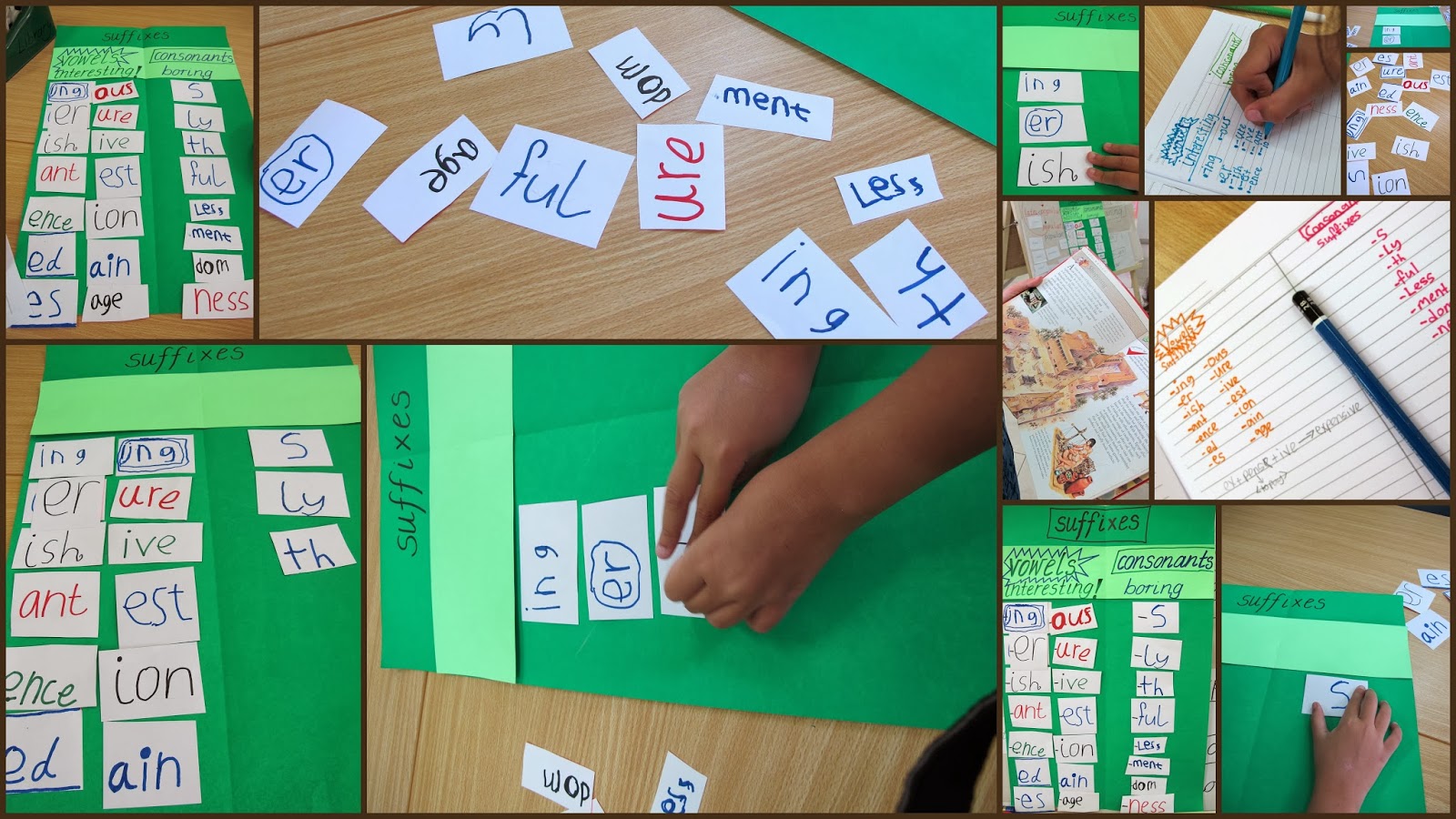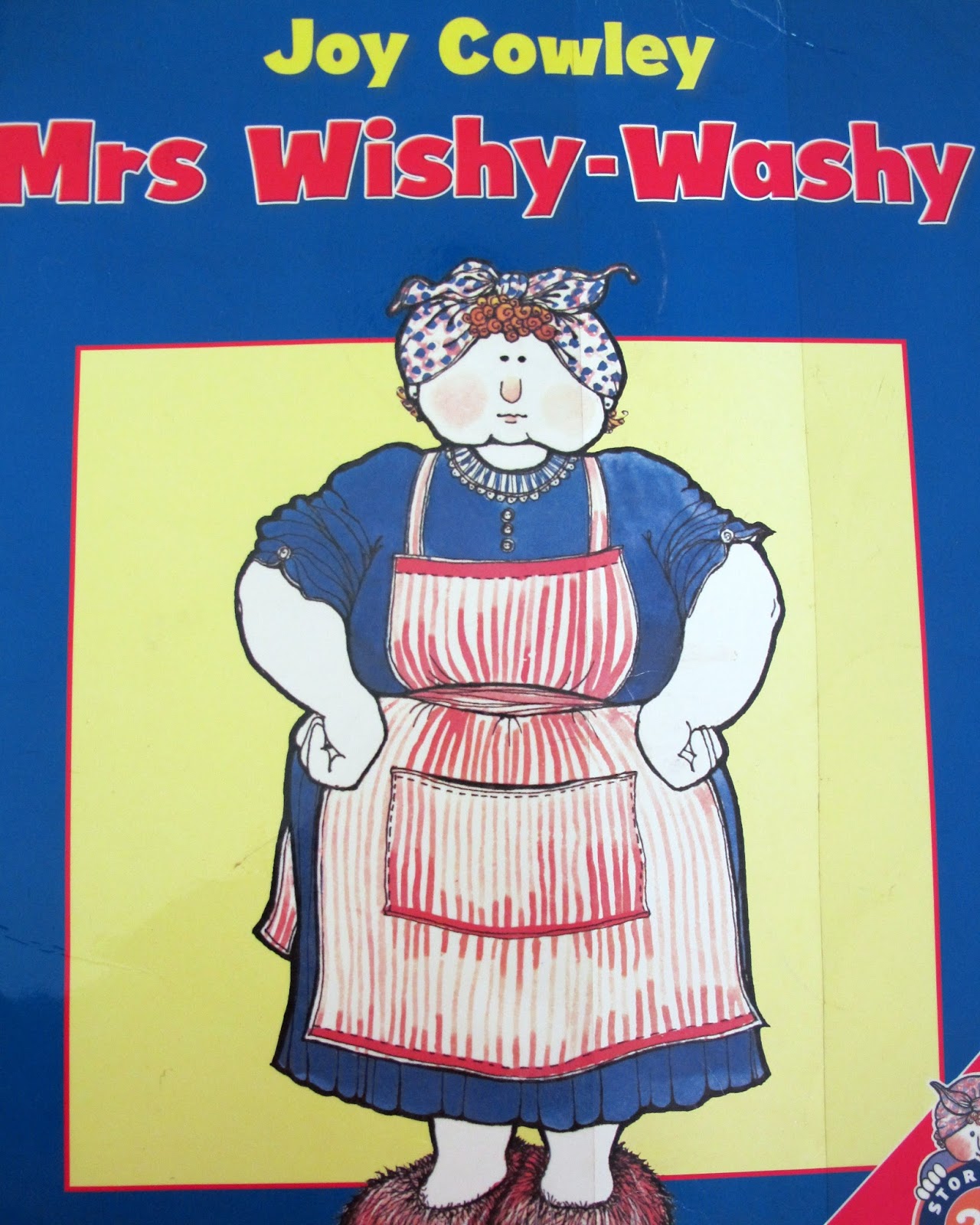Interesting and boring suffixes!
When a suffix is fixed to a base, why do some bases
make a change but others do not?
make a change but others do not?
How can we identify which suffixes cause a change to the base?
These questions, and many others, begin to quickly emerge when students are exposed and introduced to the underlying structure of words, through the morphological word sum.
Even young children begin to critically observe and then question why sometimes there is a change and other times there is not a change to the base.
Even young children begin to critically observe and then question why sometimes there is a change and other times there is not a change to the base.
Here is a suffixing activity that demonstrates
the importance of the vowel suffixes.
the importance of the vowel suffixes.
To begin the learning journey, the students perform a 'suffix hunt'. If I am planning this activity with young children, I prepare a selection of known big books and class texts for the students to search through.

The students identify an appropriate word in a big book, or other appropriate text/literature. To provide proof of the suffix the children write the word sum to demonstrate the different morphemes, focusing on meaning.
love + ly --> lovely
Further proof can involve thinking of other words that might also have this same suffix.
Further proof can involve thinking of other words that might also have this same suffix.
If a child's theory is <s + ing>;
Can <s> be the base if <ing> is the suffix? Does <s> have meaning?
Teacher questioning to guide, rather than to direct, helps learners to refine and reevaluate their thinking, in a learning environment where mistakes are valued and considered part of the learning process.
Initially, young students may not show the changes to a base within the word sum.
The very nature of this activity provides the opportunity to give immediate feedback and assess student growth and understanding of orthographic concepts. 
Once proven, the suffixes are then written on separate cards, in readiness for the suffix sorting activity.
The Suffix Sorting Activity-concept attainment.
You have probably noticed that I regularly use the concept attainment strategy (based on Jerome Bruner's work, 1977) to guide children through an inquiry process, to their own understanding of a learning concept. This strategy ensures all the students are critically thinking and actively involved by taking ownership of their proposals and theories; it allows all learners a critical thinking 'voice' and a deeper understanding of the concept introduced or revisited. |
| The challenge is to develop, analyse and identify the attributes of the suffixing concept. |
"What is my thinking?"
"Develop your own theories and ideas, but keep them 'secret' for now!"
Initially, the children choose a suffix and the teacher directs them where to place it, reminding the children to start developing a theory. After 4/5 suffixes have been placed on the chart, the students give an indication if they are beginning to formulate some ideas about the suffixing concept.In addition, during the game, the students are given the opportunity to place a chosen suffix on the chart, based on their developing conceptual understanding. The teacher can either give immediate feedback and/or there can be a group discussion about the decision. As a result of this discussion and feedback, the students may need to reconsider their initial theory.
At the end of the game the teacher provides some additional suffixes for sorting, to help students test their theory. The students are then required to write their theory/ideas on a 'post it note', ready to share with a classmate. This step supports students who have not fully grasped the sorting idea and need additional scaffolding and support from peers or teacher.

Finally, the group works together to develop a collective statement, revealing the suffixing concept:
Suffixes that start with a vowel letter and suffixes that start with a consonant letter.
Add the suffix headings to the suffix chart. When working with young children I usually introduce the vowel suffixes as 'interesting', with double thumbs up, and 'boring' suffixes, with double thumbs down.
This initial understanding then leads to the next conceptual suffixing understanding:
Suffixes that start with a vowel letter may force a change to the base, while consonant suffixes do not make any changes to the base.
A work in progress suffix chart:
Initially the chart can have as many suffixes as needed; additional suffixes can be added to the chart as they are discovered and investigated by the students.

Depending on age, the students create their own individual chart in workbooks or collectively with a partner or in small groups.

To revisit and consolidate learning, the students, individually or collectively, build words using either vowel or consonant suffixes. Hopefully this will lead the students to discover and question why sometimes there is a change to the base.
The next investigation can focus more explicitly on 'why vowel suffixes and consonant suffixes?' through a structured word inquiry process.
Please contact me through the comments section or through this link if you would like to continue this conversation about structured word inquiry in the early years.













Comments
Post a Comment